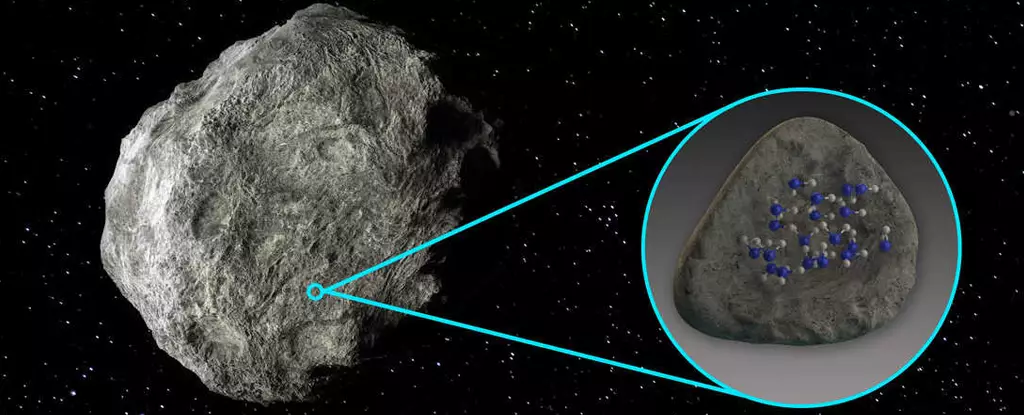Our Solar System is a vast collection of celestial objects, ranging from planets and moons to comets and asteroids. While it was previously believed that water could not exist on asteroids due to their proximity to the Sun, a recent study conducted using data from the SOFIA infrared telescope has challenged this assumption. The study has revealed the presence of water on two asteroids, Iris and Massalia, shedding light on the composition and distribution of water in our Solar System.
Asteroid Iris, with a diameter of 199 km (124 miles), is larger than approximately 99 percent of other asteroids in our Solar System. It resides within the asteroid belt located between Mars and Jupiter, orbiting the Sun at an average distance of 2.39 astronomical units and completing one orbit every 3.7 years. Massalia, comparable in size to Iris at 135 km across, shares a similar orbit with Iris. These findings have challenged the prevailing belief that water should have evaporated from asteroids over time, highlighting the need for further exploration and understanding of these celestial bodies.
Asteroids across the Solar System exhibit subtle differences in their composition and structure. Those located nearer to the Sun, known as silicate asteroids, are devoid of ice. However, as one moves further away from the Sun, icy asteroids become more common. These variations offer valuable insights into the distribution of elements in the solar nebula that existed before the formation of planets and asteroids. By studying the distribution of water within our own Solar System, scientists can gain a better understanding of its prevalence in exoplanetary systems and its potential role in supporting extraterrestrial life.
The data captured by SOFIA, the Stratospheric Observatory for Infrared Astronomy, has played a crucial role in revealing the presence of water on asteroids Iris and Massalia. This is not the first time SOFIA has made significant discoveries regarding water in our Solar System. In October 2020, the telescope identified water on the Moon’s surface using its Faint Object InfraRed Camera (FORCAST). The findings indicated the presence of approximately 350 milliliters of water in a cubic meter of lunar soil, similar to the water content found on the asteroids.
Dr. Anicia Arredondo, the lead author of the study from the Southwest Research Institute, confirmed the similarity in the spectral lines, volume, and prevalence of water on the asteroids and the Moon. On both celestial bodies, water is found locked up in minerals and absorbed by silicates. The study also attempted to analyze data from two fainter asteroids, Parthenope and Melpomene. However, due to significant noise interference, conclusive results could not be obtained. This highlights the importance of improving instrumental sensitivity for future studies.
While further analysis is required to fully comprehend the distribution of water across the Solar System, this recent study paves the way for future investigations. The scientific community now seeks to utilize the James Webb Space Telescope, renowned for its high-quality optics and superior signal-to-noise ratio. This advanced telescope has the potential to provide more comprehensive insights into the presence of water on asteroids, enhancing our understanding of the origins and potential habitability of these celestial objects.
The discovery of water on asteroids Iris and Massalia challenges previous assumptions about the absence of water on these celestial bodies. The data collected by the SOFIA infrared telescope has illuminated our understanding of the distribution, composition, and potential habitability of asteroids within our Solar System. As scientists continue to explore and analyze the intricacies of these celestial objects, further discoveries are expected, leading to new insights into the formation of our Solar System and the possibility of water and extraterrestrial life beyond our own celestial neighborhood.



Leave a Reply